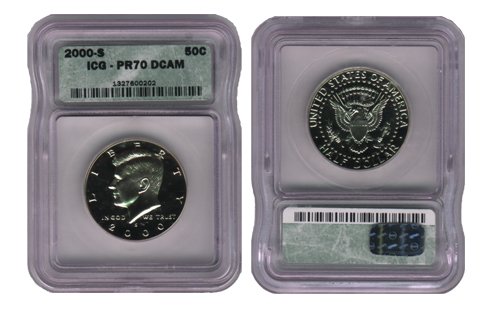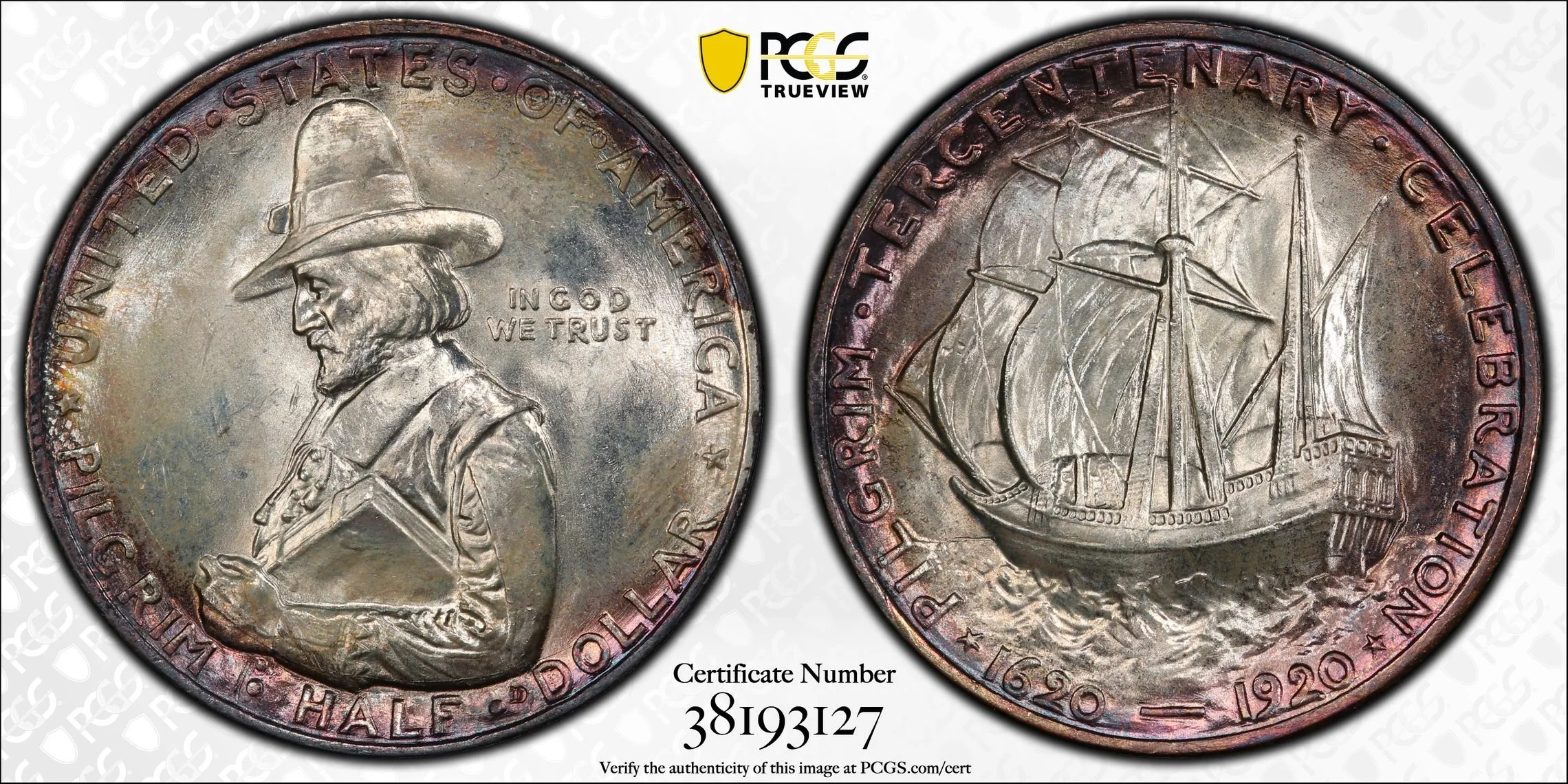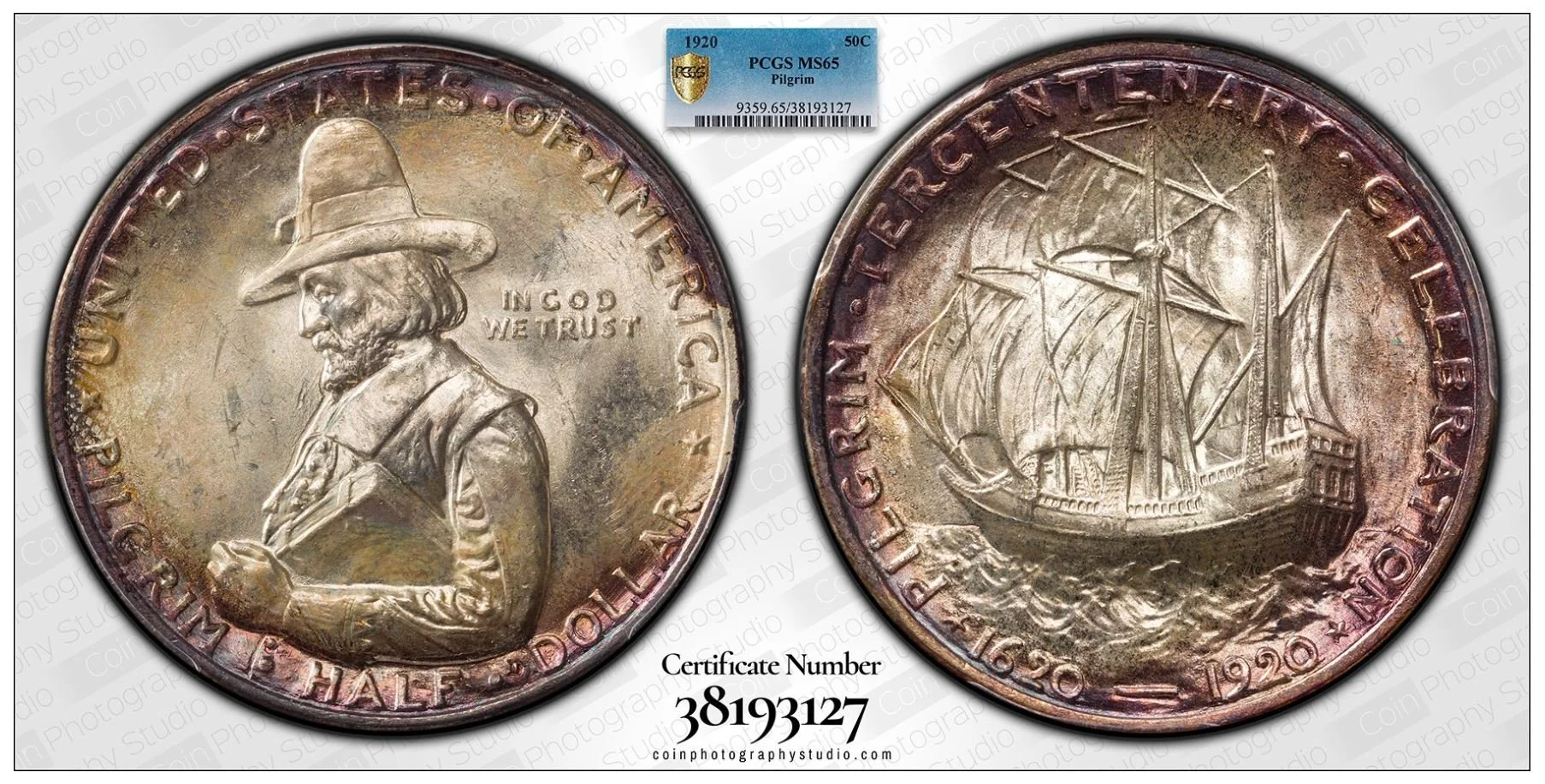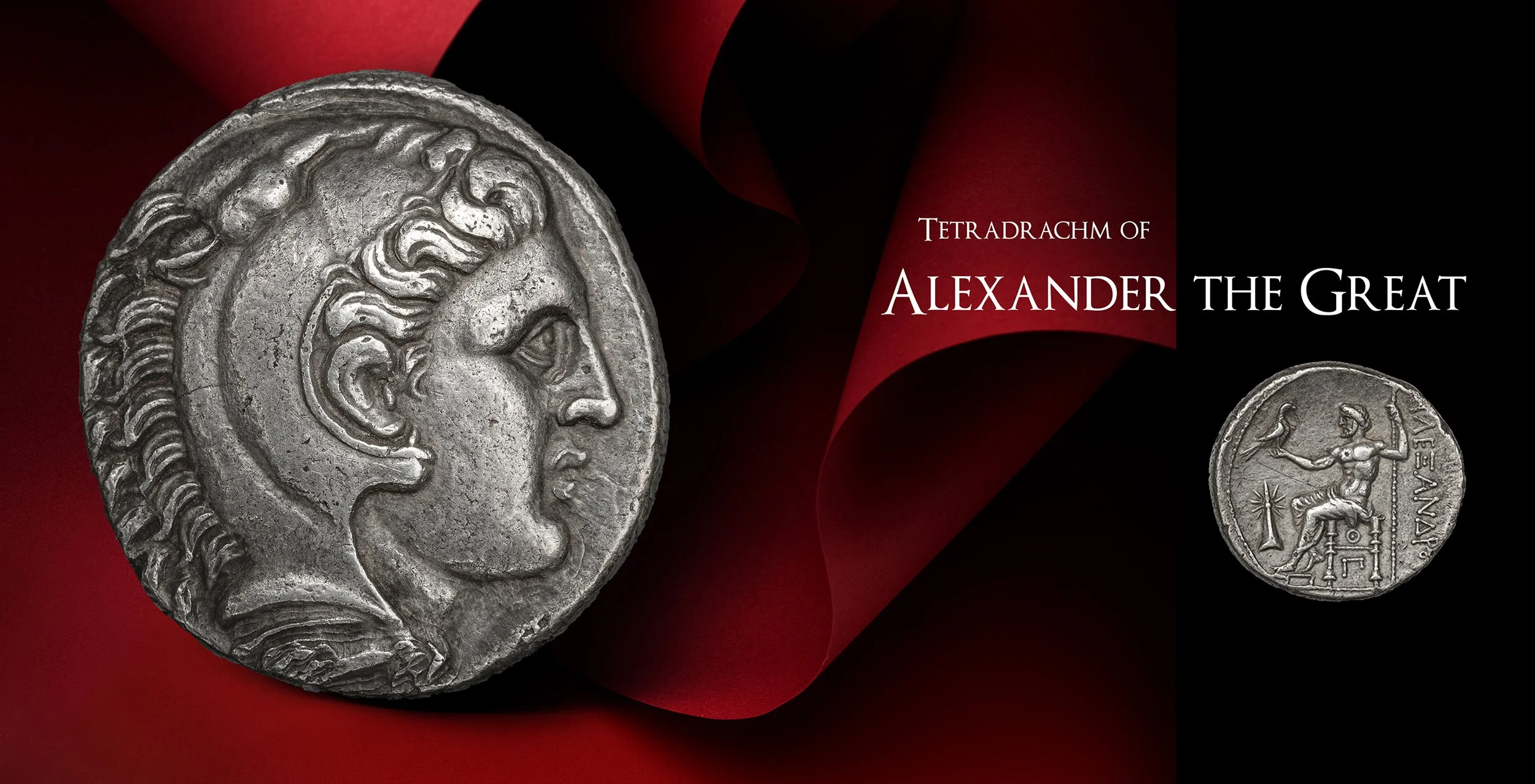Beyond TrueView
By Denis Richard, Coin Photography Studio
May 3, 2025.
7-minute read
How Private Coin Photographers Add Value for Collectors
The Allure of TrueView and PhotoVision Images
High-quality coin images like PCGS TrueView and NGC PhotoVision have become popular with collectors. These services produce quality photographs of coins submitted for grading. For a mere $5 (US) per coin, PCGS will add TrueView photography to a grading order. NGC’s PhotoVision Plus service is similarly affordable at around $8 (US) per coin. The results are impressive – sharply detailed images with accurate colour and lighting that make a coin look great. It’s no wonder collectors want these photos to showcase their treasures; in fact, PCGS TrueView images are often regarded as “glamour shots” that present a coin “in the best possible light,” bringing out vibrant toning and detail. These grading-company photos can enhance pride of ownership and even boost a coin’s marketability.
Not an Inexpensive Photo – The Other Costs
On the surface, $5–$8 for a professional coin photo sounds like a bargain. However, it’s important to note that these services are not offered as standalone imaging options – they are only available when you submit a coin for grading or reholdering. PCGS requires that TrueView be added to a grading submission form, and NGC’s PhotoVision works similarly. In other words, you cannot mail an already graded or raw coin to PCGS or NGC just for imaging – it has to go through their process.
The add-on fee seems low because coin grading companies perform these photography services in-house, subsidized by their larger operations. However, the true cost to the collector is much higher once you factor in grading fees, shipping, insurance, and membership dues. For example, one collector reported spending $134 to grade just two coins with NGC when adding PhotoVision, which excluded the annual membership fee. In effect, you might be paying $50+ per coin (or more) once all costs are included, and with it, you get that $5–$8 photo. The grading companies can charge only a few dollars for imaging because their infrastructure (photographers on staff, specialized camera setups, and automated processing systems) is already financed by the grading side of the business. PCGS even includes TrueView at no extra cost for certain premium tiers – a perk enabled by the higher grading fees in those tiers. The takeaway is that $5 per coin isn’t really the price of the photo.
Can’t I Photograph Them Myself?
Of course, you can photograph them yourself.
Millions of coins from third-party holders fill the internet without any professional photographs. For collectors, however, photographing these encapsulated coins themselves presents unique technical challenges that are often underestimated.
Left, an improperly exposed certified coin with a purple colour cast.
Slabs are made of hard plastic that reflects light. Capturing a clear, glare-free image through a slab requires advanced lighting control, precise positioning and accurate exposure. Common problems include:
Reflections and hot spots from overhead lights or camera flashes.
Distorted colours due to the plastic’s natural tint or scuffs.
Metallic surfaces are notoriously difficult to illuminate
Obstructed details caused by prongs, fogging, or label glare.
Focus issues arise because the coin sits several millimetres below the slab’s surface and can be out of level, requiring careful depth-of-field adjustments.
Even experienced photographers are challenged to get perfect images of slabbed coins. For the average collector using a smartphone or basic camera, it can be frustrating and time-consuming, and even then, the results may not do the coin justice. These difficulties are one reason that TrueView or PhotoVision images are so popular.
What If I Don’t Need Grading? Serving Coins Outside the Grading Pipeline
Think about the vast number of coins in collections that will never go beneath a grading service’s camera. Not every collector wants to slab their coins – many pieces are cherished raw or are already in older holders without images.
Private numismatic photographers can shoot raw coins, already-slabbed coins, tokens, medals – anything you want imaged – without the requirement of regrading. For collectors who don’t need or want certification, a private photographer can be far more practical and cost-effective. With reasonable per-coin rates (sometimes comparable to the grading-service route, once all costs are considered), collectors can get top-tier images. In many cases, private photographers will offer package deals or volume discounts for imaging multiple coins, making it economical to image an entire collection.
Comparing Image Quality: Grading Services vs. Private Photographers
When collectors evaluate the value of professional coin photography, one common question arises: Can they really match the quality of PCGS TrueView or NGC PhotoVision images, especially when photographing encapsulated coins?
To answer that, let’s compare examples of the same coin imaged in two scenarios:
First, as a raw coin during grading, photographed by PCGS or NGC.
Second, as the same coin after encapsulation, photographed by an experienced private numismatic photographer.
PCGS TrueView of a raw 1920 Pilgrim Half dollar.
The same coin, photographed in the holder, by Coin Photography Studio.
The same coin, photographed in the holder, by Coin Photography Studio. The coin in hand is much lower contrast than the over-processed Trueview image.
As seen in the above comparisons, while grading company images benefits from photographing coins raw (before any plastic holder interference), talented professional coin photographers can come remarkably close — even when working through the constraints of a hard plastic slab.
When the correct techniques are applied, the differences between raw and slab images can become negligible, especially to the casual viewer. This means collectors who own certified coins — without TrueView or PhotoVision images — can still achieve professional, publication-quality visuals. A private photographer can rival the best work from the grading giants — with the added benefit of flexibility, customization, and convenience.
Skill and Artistry Beyond the Automated Systems
One major advantage of hiring an expert coin photographer is the level of skill and customization they bring to the table. While the grading companies produce professional images, their process is necessarily standardized and high-volume. At PCGS, for instance, the photographers spend just seconds per coin and rely on streamlined workflows – feeding images into software that automatically sorts and aligns them in templates. This assembly-line approach is efficient but will not always provide the best picture of every single coin. The lighting and angles are generally uniform to maintain consistency, and there is limited time to adjust for each coin’s unique traits. As the PCGS imaging team candidly acknowledged, “Sometimes we get it right, sometimes we don’t” when shooting so many coins so quickly.
A private photographer can devote the necessary time and personal attention to each coin. These professionals are artists with cameras: they will study the coin’s surfaces, lustre, and coloration and adjust their techniques accordingly. Precision lighting can eliminate glare on mirrored proofs or bring out the colourful iridescence of toned coins that automated setups might miss. They carefully calibrate a white balance and colour profiles to ensure the coin’s colour is true to life – so that that red copper or golden patina shows correctly in the photo. Expert photographers also use advanced techniques like focus stacking (taking multiple shots at different focal points and combining them) to achieve incredible depth of field and sharpness across the entire coin. The composition can be tailored as well: if you want a close-up of a mint mark or an interesting variety detail, or an angled view, a private photographer can provide that, whereas a standard TrueView or PhotoVision is a fixed straight-on shot of obverse and reverse only.
An independent photographer's human touch and expertise often go beyond what any one-size-fits-all system can do. They can deliver images optimized for aesthetic appeal and accuracy based on what the coin and the client need. This is especially useful for coins that are hard to photograph (cameo proofs, ultra high-relief pieces, heavily toned coins, etc.) where creativity and experience make a big difference.
Filling the Gap for Un-Imaged Coins
Today, millions of coins in PCGS, NGC, ANACS, and other third-party holders were graded before imaging became common or submitted without photography services added. Collectors who acquire such coins on the secondary market might love to have a great photo of them, but short of sending the coin back through grading, they cannot get it from the grading firm after the fact.
The reality is that the majority of collectible coins will never see the inside of a PCGS or NGC imaging booth. From common classic coins that aren’t worth the grading fees to entire series that some collectors prefer to keep raw, there is a vast pool of coins with images of varying quality or none at all.
Private coin photographers image coins that the grading companies haven’t and likely never will. This includes entire themed collections or type sets that a collector has built over the years, raw and slabbed alike. Only an outside photographer can offer the ability to have all your coins photographed in a consistent, beautiful style – even coins from decades ago or ones in older holders –. In a sense, they democratize coin imaging: you don’t have to be a top-tier grading customer to get top-tier photos.
One of millions of PCGS-certified coins without TrueView images, photographed in slab, by Coin Photography Studio.
Cost-Effective and Convenient for Collectors
When you consider the total cost of grading and imaging through PCGS or NGC, hiring a private photographer often becomes the smarter financial decision. In many cases, unless the coin genuinely needs grading or reholdering, you’re better off putting that budget directly into photography. The results of a skilled private photographer with a slabbed coin can be as impressive as TrueView and surpass it with raw coins – and all more tailored to your preferences – without the extra overhead. A single grading submission with imaging can cost as much as hiring a photographer to shoot a half-dozen coins.
Private photographers also provide flexibility. They can:
Work with collectors remotely via insured shipping
Photograph coins at shows or local meetups
Provide images in various formats suitable for print, web, or archives
Offer consistent visual style across an entire collection
For collectors looking to image them, raw coins, or coins that don’t justify regrading, private photography is the most logical and economical path. For collectors with dozens or hundreds of coins to document, it’s often far cheaper to pay a photographer per coin than to grade each piece to get photos (especially for lower-value coins where grading fees would exceed the coin’s value).
Presenting raw coins in a TrueView-style format ensures visual consistency with existing image libraries and registry standards, making them instantly familiar and easily comparable.
Finding the Right Coin Photographer
As with any professional service, it pays to do a bit of research when choosing a coin photographer. Here are some tips to identify reputable photographers and ensure a good experience:
Examine Their Portfolio: A picture is worth a thousand words; a photographer’s past work will show their capabilities. Look for sample images on their website or social media – are the coins sharply focused, with true-to-life colour and lighting? Do the images impress you as much as PCGS/NGC shots? A consistent track record of quality is the best indicator of skill.
Ask for References or Testimonials: Seasoned photographers will likely have repeat clients or dealers who can attest to their service. Don’t hesitate to ask around on coin forums or local clubs for recommendations. Fellow collectors can often point you to photographers who are known and trusted in the community.
Discuss Experience and Handling: Make sure the photographer is experienced specifically in numismatic photography (not just general product photography). They should be familiar with handling high-value coins and using proper precautions (gloves, safe environments, etc.) so you can trust them with your coins. Professionals often carry insurance or have policies in place for your peace of mind.
Understand the Deliverables and Terms: Communicate upfront about what you will receive – typically high-resolution digital images, perhaps optional printed photos – and how long the process will take. Clarify the pricing (per coin or per session) and any minimum order or travel fees if applicable. A transparent, professional approach is a good sign.
Match the Style to Your Needs: Different photographers have different styles. Some might excel at dramatic lighting that highlights lustre, while others may focus on perfectly colour-accurate, neutral shots. If you have specific goals (e.g., images for an auction vs. archival documentation), ensure the photographer can deliver in the style that suits that purpose.
By taking these steps, you can find a photographer who will treat both you and your coins with professionalism. Many collectors forge long-term relationships with their favourite photographers, much like they do with trusted coin dealers.
There’s more than one way to showcase a coin—yet TrueView and similar services offer only a single, fixed presentation. That uniformity speaks volumes about the limitations of automated, high-volume imaging. A private photographer can go beyond side-by-side shots to reveal a coin’s whole personality.
Bringing Your Coins Into the Best Light
In the end, private coin photographers offer a service that beautifully complements the grading companies’ imaging programs. PCGS TrueView and NGC PhotoVision are fantastic services for what they are, but they are inherently limited to coins going through the grading pipeline. Most coins will never have that opportunity. By leveraging the talents of independent photographers, collectors can obtain museum-quality images of any coin in their collection, often at a comparable or better net cost when grading isn’t needed. The value of these images goes far beyond aesthetics – they are practical tools for selling, insuring, sharing, and enjoying your coins to the fullest.
Professional photography turns your coins into portable, shareable treasures and preserves their legacy for the future. It empowers you to showcase your collection without compromise. So, the next time you admire a TrueView or PhotoVision image, remember that you have options. A skilled private photographer can deliver that same magic for your coins on your terms. For today’s astute collector, it’s an investment that truly shines.










